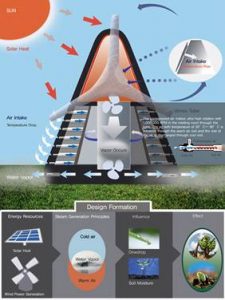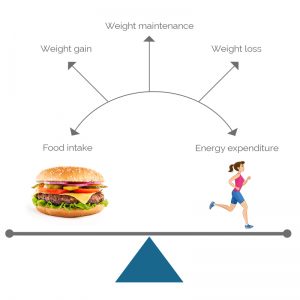Tell me and I forget. Teach me and I remember. Involve me and I learn.
Article Two looked at the former of the ‘Separate and Combine’ principle and we will now look at the latter element. The ‘combine’ dynamic can come about in many ways. Engagement of the mind is one that has captured my attention. I will follow with three examples to give you an idea of how the combine dynamic via engagement could assist one or more areas in your own life.
Firstly, let’s look at what ‘combine’ means (via Dictionary.com):
- To bring into or join in a close union or whole; unite:
She combined the ingredients to make the cake. They combined the two companies. - To possess or exhibit in union:
- To unite for a common purpose; join forces:
After the two factions combined, they proved invincible.
I like to think of combine as ‘to bring together’ and see ‘engagement’ as one of a whole array of ideas that can bring about a combination.
Taking ownership…
In years gone by, charity organisations supplying assistance to areas suffering from drought or low rainfall usually consisted of shipping large quantities of water to these areas. It was logistically very complex and expensive.
Charities such as wateraid.org have shifted their approach so that they now are proactively directing their efforts at low-cost, sustainable technologies to help the world’s poorest people gain access to clean water and safe sanitation.
This includes water technologies such as protected hand-dug wells, boreholes, tube wells, rainwater harvesting schemes, protected springs, gravity flow schemes, sand dams and infiltration galleries.
If hand pumping won’t work and support is required, electrical, diesel and solar pumps are sometimes used. Communities are trained to cover operation and maintenance costs and basic spare parts are sourced locally. It’s vital that the methods used are sustainable hence the importance of the local people engaging in the process so they can take full ownership of their own water supplies.
Engagement is self-empowering; it comes from taking ownership of the process.
This includes educating local engineers not just to install and maintain the technology but also in improving and building on the technology.
As the innovation envelope opens up, the use of even further-reaching technology is being developed and tested with ‘water vapour’ ideas. These make use of the clear night air which is so low in temperature that it provides a natural method of vaporisation which can be tapped into (pun intended). As can be seen below in Illustration 1, it is the culmination of various advancing technologies that can make for a highly sustainable and self-generating water source.

Helping people to help themselves…
Another example closer to home is that of the Big Issue the street newspaper founded in 1991and published on four continents. It is written by professional journalists and sold by homeless individuals. The Big Issue is one of the UK’s leading social businesses and exists to offer homeless people, or individuals at risk of homelessness, the opportunity to earn a legitimate income thereby helping them to reintegrate into mainstream society.
 One of the informal mottos of the Big Issue is ‘hand up – not hand out’ as it is the seller’s engagement with the magazine and their customers that assists them in restoring their feelings of self-esteem and self-worth.
One of the informal mottos of the Big Issue is ‘hand up – not hand out’ as it is the seller’s engagement with the magazine and their customers that assists them in restoring their feelings of self-esteem and self-worth.
Striking a Balance…
As a final example, I’m going to talk about a friend of mine. She had always been fit and active but a knee injury meant that she had to reduce her exercise activities for six months. She was concerned that she might put on some unwanted weight and wasn’t very keen on the idea of adopting a strict diet. She had always thought of dieting as a form of punishment. She stumbled by chance upon a talk about nutrition which said that applying a ratio helped a lot of people maintain their ideal weight. The idea was that most people’s bodies can handle a level of ‘unhealthy food’ with ease as long as it is balanced out with an appropriate ratio of highly nutritious food.
The 80/20 ratio of highly nutritious food to fun food was given as an example. She tested this out for a month and to her surprise found that she enjoyed it. Eating nutritiously 80% of the time and then being able to reward herself for the remaining 20% worked great for her. So much so that when her knee recovered, she simply tweaked the percentages to suit her new activity levels.
By engaging with this new way of thinking about food she was able to make a deal with herself and stick with it. It suited her lifestyle and goals. She had discovered her ‘path of least resistance’
I hope these three examples work like fresh oil in an engine; lubricating the mechanics of your mind so your imagination flows easier and ideas loosen up. Now let’s turn our attention around to you…
You might ask ‘are there any areas of my life where I would like to feel more engaged?’
By having these three examples oiling the wheels of your thinking, you may find yourself sometime in the future looking back and remembering how the engagement process began for you.
Compounding your benefits…
Let’s take a look at ‘your problem’ from Article One. How would you say it is looking now? Has there been any shift in your mind-set from the great questions you’ve asked of yourself (Article Two)? Or has engaging with an element of this problem brought a change? (Article Three).
I’ll just share a brief example of my own. I recently noticed that the world of rapidly increasing technology means that people are more and more drawn to data in visual formats. I thought that podcast and webinar technologies could be a very useful way of sharing concepts and ideas on fascinating topics. I asked myself ‘Is there someone out there who is really good at sharing the basics?’ I carried out a search and discovered a lady by the name of Amy Porterfield who offered an information webinar about how a person can create their own high quality webinars. The resistance I felt before the webinar was about a 7 on the 1 to 10 scale and was brought down to a 3 afterwards.
Summary points:
- Engaging the mind is just one very useful example of the ‘combine’ aspect in action.
- Engagement can come in many forms and usually has an element of transforming what was a problem into a valuable life-learning opportunity.
- Engagement is less about forcing and more about inviting the mind to change roles from spectator to participant.
References:
- http://www.yankodesign.com/2011/01/10/the-water-vapor-project/

